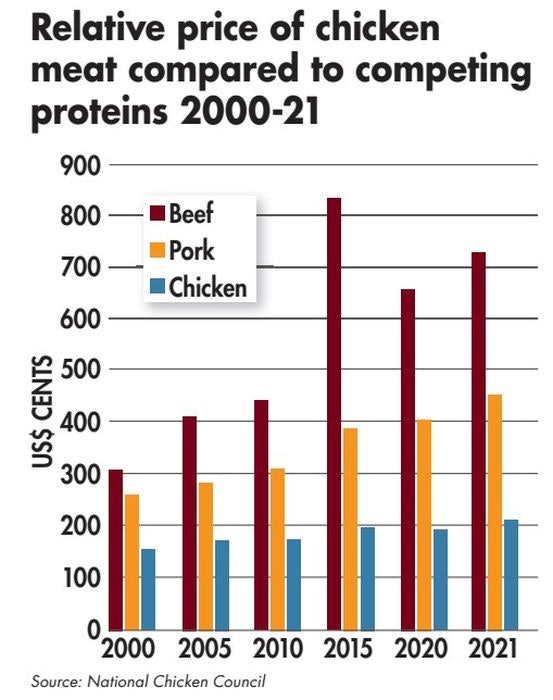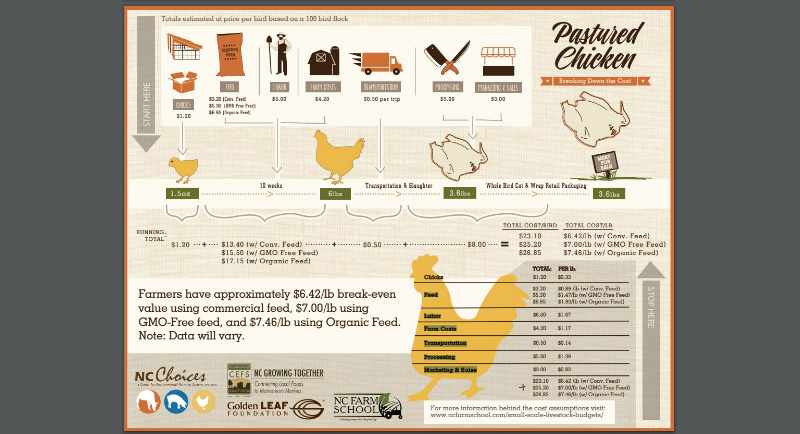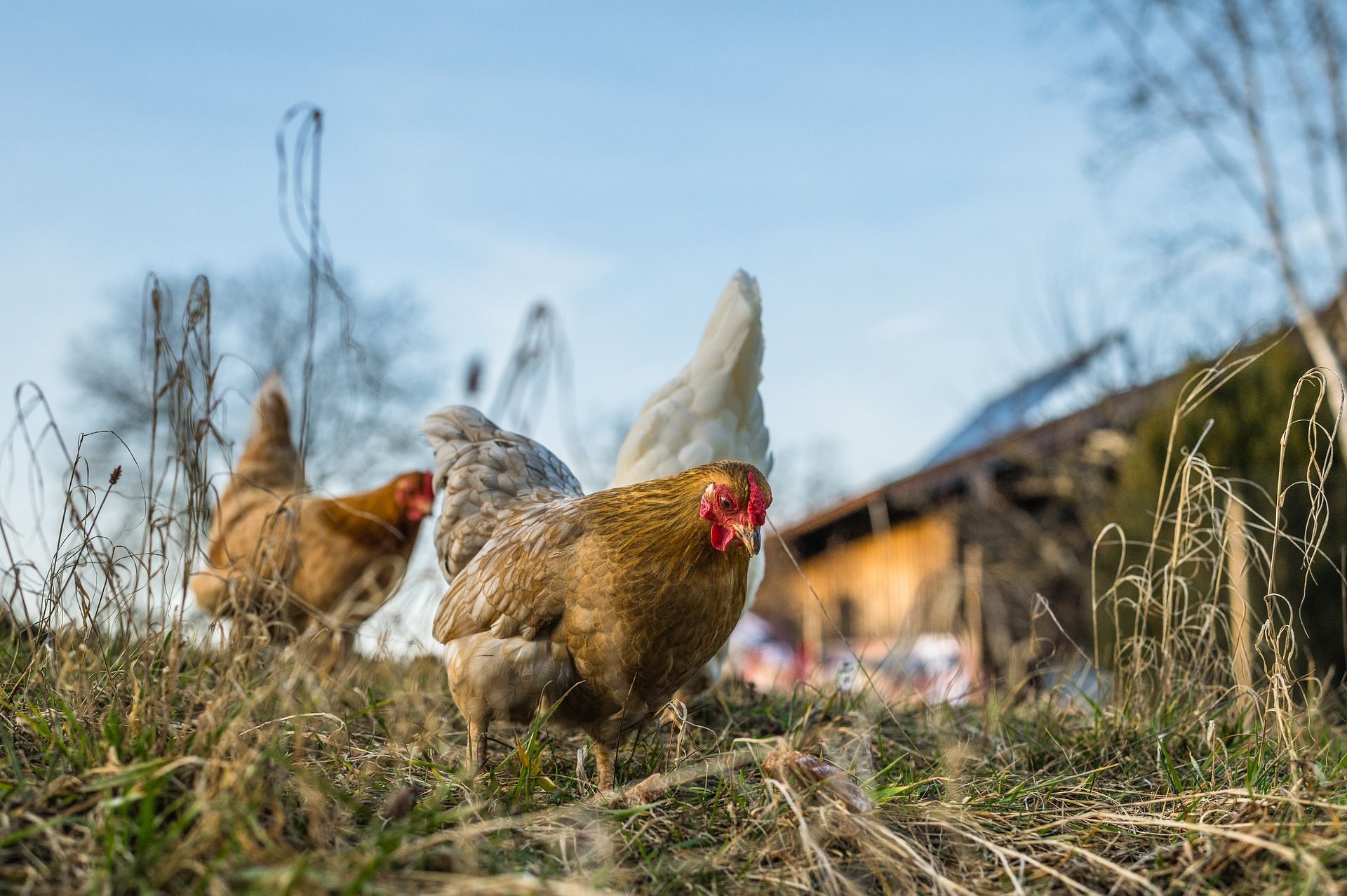Factors Affecting Chicken Price Per Lb

Chicken price per lb is influenced by a variety of factors. Production costs, including feed prices and labor expenses, play a significant role in determining the final price. Transportation costs also contribute to the overall cost of chicken, as do market demand and competition among poultry suppliers. Fluctuations in any of these factors can lead to changes in chicken prices. Additionally, the pricing of organic chicken can differ from that of conventional chicken due to factors such as certification requirements and higher production costs. It’s important to consider these factors when analyzing and budgeting for chicken purchases.
Factors Influencing Chicken Prices
Some of the key factors that influence chicken prices include production costs, feed prices, labor expenses, transportation costs, market demand, and competition among poultry suppliers. Fluctuations in any of these factors can have a significant impact on the overall price of chicken per pound. For example, if feed prices increase or there is high demand for chicken, the price per pound may rise. On the other hand, if there is excess supply or lower production costs, chicken prices may decrease. It is important for consumers to consider these factors when purchasing chicken.
Economic Factors Affecting Poultry Costs
Economic factors play a crucial role in determining poultry costs. One key factor is the price of feed, as it accounts for a significant portion of production expenses. Fluctuations in grain prices, such as corn and soybeans, can directly impact the cost of raising chickens. Additionally, labor expenses, including wages and benefits for farm workers, influence poultry costs. Transportation costs, such as fuel prices and logistics, also contribute to the overall expenses. Lastly, market demand and competition can affect chicken prices, as higher demand or increased competition may lead to price fluctuations.
Organic Vs. Conventional Chicken Pricing

When it comes to chicken pricing, there is often a difference between organic and conventional options. Organic chicken tends to be more expensive compared to conventional chicken, primarily due to the higher production costs associated with organic farming practices. These costs include organic feed, the use of outdoor access and enriched environments, and adhering to organic certification standards. Additionally, organic chicken takes longer to grow and requires more space, further contributing to the higher price per pound. However, consumers often choose organic chicken for its perceived health benefits and environmental sustainability.
Price Comparison Between Organic And Conventional Chicken
Organic chicken tends to be more expensive compared to conventional chicken. The higher price is mainly due to the higher production costs associated with organic farming practices. These costs include organic feed, providing outdoor access and enriched environments for the chickens, and adhering to organic certification standards. Additionally, organic chicken takes longer to grow and requires more space, further contributing to the higher price per pound. However, consumers often choose organic chicken for its perceived health benefits and environmental sustainability.
Factors Influencing The Pricing Of Organic Chicken
Several factors contribute to the higher pricing of organic chicken. Firstly, organic farming practices require additional costs such as providing organic feed, offering outdoor access to chickens, and maintaining enriched environments. These practices align with organic certification standards but increase production expenses. Additionally, organic chicken takes longer to grow and requires more space, further driving up the price per pound. The limited supply of organic chicken also plays a role in its higher pricing, as it is not as widely available as conventional chicken. The perceived health benefits and environmental sustainability of organic farming also contribute to its premium price.
Industry Trends In Chicken Pricing

Industry trends in chicken pricing can be influenced by various factors. One of the key trends in recent years has been the rising consumer demand for organic and free-range chicken, which has led to higher prices for these products. Additionally, fluctuations in feed costs, changes in government regulations, and shifts in consumer preferences can all impact chicken pricing. It is important for both producers and consumers to stay informed about these industry trends to make the most informed decisions when it comes to purchasing and pricing chicken products.
Current Trends In Chicken Pricing
Current trends in chicken pricing show that there is an increasing demand for organic and free-range chicken products. Consumers are becoming more conscious about their food choices and are willing to pay a premium for chickens that are raised without antibiotics and hormones. This trend has led to higher prices for organic chicken compared to conventional chicken. Additionally, there has been a rise in the popularity of specialty chicken products, such as heritage breeds or locally sourced chickens, which can also impact pricing. These current trends highlight the importance of offering a variety of chicken products to cater to the evolving consumer preferences.
How Market Demand Affects Poultry Prices
Market demand plays a crucial role in determining poultry prices. When there is high demand for chicken, prices tend to increase as suppliers may struggle to meet the increased order volumes. On the other hand, when demand is low, prices may decrease as suppliers try to sell their surplus inventory. Factors such as consumer preferences, dietary trends, and economic conditions can all influence market demand for poultry. It is important for poultry suppliers to keep a close eye on market trends and adjust their prices accordingly to meet consumer demands.
Analyzing Chicken Price Fluctuations

Analyzing chicken price fluctuations is crucial for understanding the dynamics of the poultry industry. Several factors contribute to the volatility of chicken prices, including feed costs, labor expenses, and market demand. By closely examining the reasons behind these fluctuations, poultry suppliers can make informed decisions to mitigate the impact on their bottom line. Seasonal variations also play a role in chicken price changes, as consumer demand fluctuates during holidays and summer grilling seasons. Monitoring production costs and staying updated on market trends can help suppliers navigate these price fluctuations and strategize accordingly.
Understanding The Reasons Behind Chicken Price Fluctuations
Chicken price fluctuations are influenced by several factors. Changes in feed prices, such as fluctuations in the cost of corn and soybeans, can significantly impact the price of chicken. Labor expenses, including wages and benefits for poultry farm workers, also play a role in price fluctuations. Additionally, market demand and competition among poultry suppliers can affect prices. Understanding these factors is essential for poultry suppliers to make informed decisions and adjust their production and pricing strategies accordingly. By closely monitoring these factors, suppliers can better anticipate and navigate the fluctuations in chicken prices.
Seasonal Impacts On Poultry Costs
Seasonal variations can have a significant impact on poultry costs. During certain times of the year, such as holidays and special events, the demand for chicken tends to increase, leading to higher prices. For example, the demand for chicken typically rises during the summer grilling season and around major holidays like Thanksgiving and Christmas. Additionally, factors like weather conditions and natural disasters can affect the availability of feed and overall production, which can also result in price fluctuations. It is important for poultry suppliers to anticipate these seasonal impacts and adjust their production and pricing strategies accordingly.
Impact Of Production Costs On Chicken Price

Production costs play a significant role in determining the price of chicken per pound. These costs include expenses related to hatcheries, feed, labor, transportation, and processing. Higher production costs translate to higher prices for consumers. Factors such as the cost of animal feed, energy prices, and labor wages can all impact production costs. Fluctuations in these costs can lead to price variations in the chicken market. Poultry suppliers need to carefully manage their production expenses to ensure that the final price per pound remains competitive and profitable.
Cost Breakdown Of Producing Chicken
The cost breakdown of producing chicken includes several key expenses. These expenses primarily consist of hatchery costs, feed expenses, labor wages, transportation fees, and processing fees. Hatchery costs cover the breeding and hatching of chicks, while feed expenses account for the price of feed and supplements for the chickens. Labor wages involve the payment of workers involved in caring for the chickens and processing the meat. Transportation fees account for the cost of transporting the chickens from the farm to the processing plant. Finally, processing fees cover the costs of turning the live chickens into packaged poultry products. Each of these expenses contributes to the overall production costs and ultimately impacts the price per pound of chicken.
How Production Expenses Affect The Final Price Per Lb
Production expenses have a direct impact on the final price per pound of chicken. These expenses include hatchery costs, feed expenses, labor wages, transportation fees, and processing fees. As these costs increase, the overall production expenses rise, leading to an increase in the final price per pound of chicken. For example, if feed prices go up or labor wages increase, the cost of raising chickens also increases. These increased expenses are eventually passed on to the consumer, resulting in higher prices per pound of chicken. It is important for producers to carefully manage these production expenses to maintain competitive prices in the market.
Conclusion

In conclusion, understanding the cost of chicken per pound is essential for consumers to make informed decisions about their poultry purchases. By understanding the factors that influence the price of chicken, individuals can budget more effectively and take advantage of favorable deals. It is important to stay aware of market trends and fluctuations in chicken prices, as this can help consumers save money and make cost-effective choices. Whether opting for conventional or organic chicken, being knowledgeable about pricing can lead to smarter and more economical buying decisions.
Strategies For Saving On Chicken Purchases
Consumers can employ several strategies to save on their chicken purchases. These include:
- Buying in bulk: Purchasing chicken in larger quantities can often result in lower prices per pound. Consider buying family packs or whole chickens and portioning them out for multiple meals.
- Comparison shopping: Compare prices at different grocery stores or online platforms to find the best deals. Take note of weekly specials and promotions to maximize savings.
- Freezing leftovers: If you have leftover chicken, freeze it for later use. This prevents unnecessary food waste and allows you to stretch your chicken supply further.
- Cooking from scratch: Pre-packaged chicken products like pre-cooked or marinated chicken tend to be pricier. Opt for buying plain cuts of chicken and season or marinade them yourself to save money.
- Utilizing sales and coupons: Keep an eye out for sales, discounts, and coupons for chicken. Look for online coupon websites or check your local grocery store’s weekly flyers for the best deals.
By implementing these strategies, consumers can save money while still enjoying the benefits of chicken in their meals.
Tips For Budgeting Based On Chicken Price Fluctuations
When it comes to budgeting based on chicken price fluctuations, there are several tips to keep in mind. Firstly, it’s important to track the prices of chicken over time and be aware of any seasonal or market-driven fluctuations. This can help you plan your purchases and take advantage of lower prices. Additionally, consider buying in bulk during periods of lower prices and freezing the excess for later use. Meal planning and utilizing leftovers can also help stretch your chicken budget. Lastly, be open to alternative cuts of chicken that may be more affordable. Overall, staying informed and being flexible with your choices can help you budget effectively when buying chicken.
FAQ About Chicken Price Per Lb: Understanding Poultry Costs
Q: Why do chicken prices vary per pound?
A: Chicken prices vary per pound due to factors such as demand and supply, quality of the chicken, production costs, market conditions, and seasonality.
Q: How can I find the best deals on chicken?
A: To find the best deals on chicken, consider buying in bulk, comparing prices at different stores, looking for discounts or promotions, and buying whole chickens or value packs.
Q: What is considered a good price per pound for chicken?
A: A good price per pound for chicken can vary but typically falls between $1 to $3, depending on the type of chicken, such as organic, free-range, or conventional.
Q: How can I save money on poultry costs?
A: To save money on poultry costs, consider buying in-season chicken, using cheaper cuts or buying whole chickens, buying from local farms or farmers’ markets, and exploring store loyalty programs or coupons.
Q: Are there any ways to estimate future chicken prices?
A: While it’s challenging to predict future chicken prices accurately, staying informed about factors affecting poultry costs, such as feed prices, production trends, and economic indicators, can help in making informed decisions.
Q: What are some tips for budgeting poultry costs?
A: Budgeting for poultry costs involves planning meals, buying in bulk when possible, utilizing leftovers efficiently, trying different chicken cuts for variety, and seeking out cost-effective recipes to maximize value.

Hot Pot Chinese Restaurant, located in Mechanicsville, MD 20659, is a culinary destination that offers a delightful array of Chinese cuisine. From the cozy ambiance to the delectable dishes, Hot Pot Chinese Restaurant is dedicated to providing an exceptional dining experience for all patrons. Since our establishment, Hot Pot Chinese Restaurant has been committed to serving the finest Chinese food, offering a diverse menu that caters to a wide range of tastes. Whether you’re craving traditional favorites like Kung Pao Chicken and Mongolian Beef or seeking out more adventurous options like Szechuan Spicy Hot Pot, our menu has something to satisfy every craving.